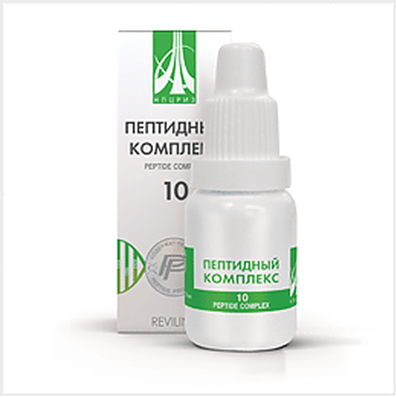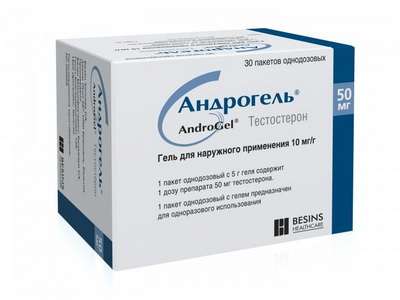Instruction for use: Kagocel
I want this, give me price
Dosage form: Substance-amorphous powder; tablets
Active substance: Kagocelum
ATX
J05AX Other antivirals
Pharmacological groups
Antiviral [Antiviral (excluding HIV) means]
Antiviral agent [Interferon inductors]
The nosological classification (ICD-10)
B00 Infections caused by the herpes simplex virus [herpes simplex]: Herpes simplex; Herpes virus; Herpes simplex virus; Herpes simplex virus type I and II; HSV; Herpes; Herpes simplex / herpes simplex /; Herpes lips; Herpes simplex; Herpes in patients with immunodeficiency; Labial herpes; Acute herpetic disease of the mucous membranes; Herpes simplex; Herpes simplex skin and mucous membranes; Herpes simplex with skin and mucous membrane damage; Recurrent herpes; Urogenital herpetic infection; Chronic recurrent herpesvirus infection; Herpes-viral infections of various localizations
J06 Acute upper respiratory tract infections of multiple and unspecified locations: Frequent colds of viral diseases; Infections of ENT organs; Acute respiratory illness of influenza nature; Pain for colds; Acute catarrhal disease; Cold; Colds; Colds; Respiratory infection; Seasonal catarrhal disease; Seasonal colds; Pain in infectious and inflammatory diseases of the upper respiratory tract; Bacterial infections of the upper respiratory tract; Bacterial infections of the respiratory system; Viral respiratory disease; Viral respiratory tract infections; Inflammatory disease of the upper respiratory tract; Inflammatory diseases of the upper respiratory tract; Inflammatory diseases of the upper respiratory tract with difficult to separate sputum; Inflammatory respiratory disease; Secondary infections for colds; Difficult sputum separation in acute and chronic respiratory diseases; Upper respiratory tract infections; Infections of the upper respiratory tract; Respiratory tract infections; Respiratory and lung infections; Infectious-inflammatory diseases of the upper respiratory tract; Infectious-inflammatory diseases of the upper respiratory tract and ENT organs; Infectious-inflammatory diseases of the upper respiratory tract in adults and children; Infectious-inflammatory diseases of the upper respiratory tract; Infectious inflammation of the respiratory tract; Respiratory tract infection; Qatar upper respiratory tract; Catarrh of the upper respiratory tract; Catarrh of the upper respiratory tract; Catarrhal phenomena from the upper respiratory tract; Cough in diseases of the upper respiratory tract; Cough for colds; ARVI; ARI; ARI with phenomena of rhinitis; Acute respiratory infection; Acute infectious-inflammatory disease of the upper respiratory tract; Acute respiratory disease; Persecution in the throat or nose; Respiratory and viral infections; Respiratory diseases; Respiratory infections; Recurrent respiratory tract infections; Secondary infections with influenza; Influenza states; Feverish conditions for influenza
J11 Influenza, virus not identified: Influenza; Influenza in the early stages of the disease; Influenza in children; cold in the chest; Begins flu-like condition; Acute disease parainfluenza; parainfluenza; parainfluenza state; influenza epidemics; The pains of the influenza
Composition
Tablets - 1 tablet.
active substance: Kagocel 12 mg
Auxiliary substances: potato starch - 10 mg; Calcium stearate - 0.65 mg; Loudipress (lactose monohydrate, povidone (Kollidon 30), crospovidone (Kollidon CL)) - to obtain a tablet weighing 100 mg
Description of dosage form
Tablets: from white with a brown tinge to light brown, round, biconcave, with impregnations of brown color.
Pharmachologic effect
Mode of action - antiviral, immunomodulating.
Pharmacodynamics
The main mechanism of action of the drug Kagocel® (hereinafter referred to as Kagocel) is the ability to induce the production of interferons. Kagocel causes the formation in the human body of the so-called. Late interferons, which are a mixture of alpha and beta interferons with high antiviral activity. Kagocel causes the production of interferons in virtually all cell populations that participate in the antiviral response of the body: T- and B-lymphocytes, macrophages, granulocytes, fibroblasts, endothelial cells. When administered in one dose of Kagocel, the interferon titer in serum reaches its maximum values after 48 hours.
The interferon response of the body to the administration of kagocella is characterized by a prolonged (up to 4-5 days) circulation of interferons in the bloodstream. The dynamics of accumulation of interferons in the intestine when ingested kagocel does not coincide with the dynamics of circulating interferon titers. In the blood serum, interferon production reaches high values only 48 hours after the administration of kagocel, while in the intestine the maximum production of interferons is observed after 4 hours.
The drug Kagocel, when prescribed in therapeutic doses, is non-toxic, does not accumulate in the body. The drug does not have mutagenic and teratogenic properties, is not carcinogenic and does not have an embryotoxic effect.
The greatest effectiveness in the treatment with Kagocel is achieved with its appointment no later than the 4th day after the onset of an acute infection. For preventive purposes, the drug can be used at any time, incl. And immediately after contact with the infectious agent.
Pharmacokinetics
24 hours after the introduction of the drug Kagocel® accumulates, mainly in the liver, to a lesser extent in the lungs, thymus, spleen, kidneys, lymph nodes. Low concentration is noted in adipose tissue, heart, muscles, testes, brain, blood plasma. The low content of kagocel in the brain is explained by the high molecular weight of the preparation, which hampers its penetration through the BBB. In plasma, the drug is mainly in a bound form.
With daily repeated administration of Kagocel Vd of the drug varies widely in all organs examined. The accumulation of the drug in the spleen and lymph nodes is especially pronounced. When administered orally, approximately 20% of the administered dose of the drug enters the total blood flow. The absorbed drug circulates in the blood, mainly in the form associated with macromolecules: with lipids - 47%, with proteins - 37%. Unrelated part of the drug is about 16%.
Excretion: the preparation is excreted from the body, mainly through the intestine: after 7 days after administration, 88% of the administered dose is withdrawn from the body, incl. 90% through the intestine and 10% by the kidneys. In the exhaled air the drug was not detected.
Indications of the drug Herpferon
Prevention and treatment of influenza and other acute respiratory viral infections (ARVI) in adults and children aged 3 years;
Treatment of herpes in adults.
Contraindications
Hypersensitivity to the components of the drug;
Deficiency of lactase, lactose intolerance, glucose-galactose malabsorption;
pregnancy;
Lactation period;
Age up to 3 years.
Application in pregnancy and breastfeeding
Due to the lack of necessary clinical data, it is not recommended to take Kagocel during pregnancy and lactation.
Side effects
Perhaps the development of allergic reactions.
If any of the side effects indicated in the manual are aggravated, or the patient has noticed any other side effects not listed in the instructions, you should notify the doctor.
Interaction
Kagocel is well combined with other antiviral drugs, immunomodulators and antibiotics (additive effect).
Dosing and Administration
Inside, regardless of food intake.
For treatment of influenza and SARS, adults are prescribed in the first 2 days of 2 tablets. 3 times a day, the next 2 days - 1 table. 3 times a day. In total, the course of treatment - 18 tablets, the duration of the course - 4 days.
Prevention of influenza and acute respiratory viral infection in adults is carried out by 7-day cycles: 2 days of 2 tablets. 1 time per day, 5 days break, then repeat the cycle. The duration of the preventive course is from 1 week to several months.
For the treatment of herpes in adults, appoint 2 tablets. 3 times a day for 5 days. In total, the course of treatment - 30 tablets, the duration of the course - 5 days.
For the treatment of influenza and ARVI children aged 3 to 6 years are prescribed in the first 2 days of 1 table. 2 times a day, the next 2 days - 1 table. 1 per day. In total there are 6 tablets per course, and the duration of the course is 4 days.
For treatment of influenza and acute respiratory viral infection, children aged 6 years and older are prescribed in the first 2 days of 1 table. 3 times a day, the next 2 days - 1 table. 2 times a day. In total, the course - 10 tables, the duration of the course - 4 days.
Prevention of influenza and SARS in children aged 3 years is carried out 7-day cycles: 2 days for 1 table. 1 time per day, 5 days break, then repeat the cycle. The duration of the preventive course is from 1 week to several months.
Overdose
In case of accidental overdose, it is recommended to prescribe an abundant drink, induce vomiting.
Special instructions
To achieve a therapeutic effect, the drug should be taken no later than the 4th day after the onset of the disease.
Influence on ability to drive vehicles, mechanisms. The effect of the drug on the ability to drive vehicles and mechanisms has not been studied.
Release form
Tablets 12 mg. For 10 tab. In a contour mesh packaging of PVC / polyvinylidene chloride film and aluminum foil with a heat-sealable coating. 1, 2 or 3 contour-cell packings are placed in a bundle.
Manufacturer
1. OOO "NEARMEDIK PLYUS", Russia
2. OOO "Hemofarm", Russia
3. OOO "NEARMEDIK FARMA", Russia
Conditions of supply of pharmacies
Without recipe.
Storage conditions of the drug Herpferon
In the dark place at a temperature of no higher than 25 ° C.
Keep out of the reach of children.
The shelf life of the drug Herpferon
4 years.
Do not use beyond the expiration date printed on the package.

 Cart
Cart





